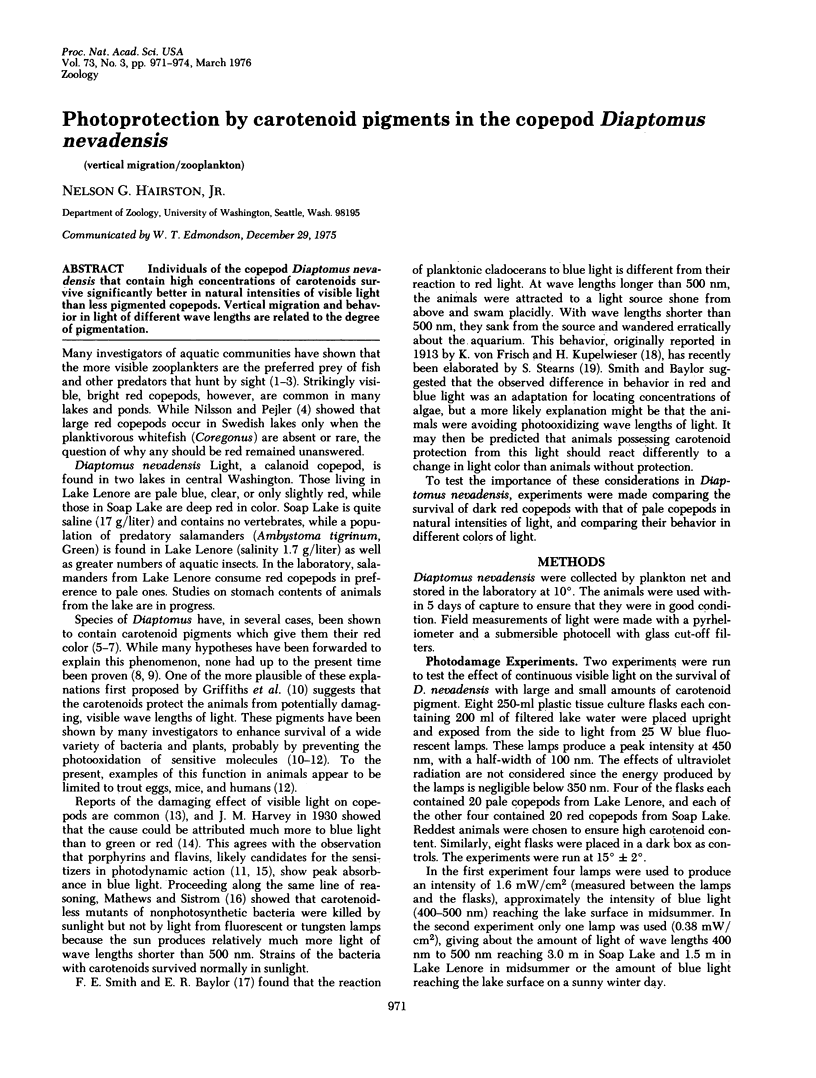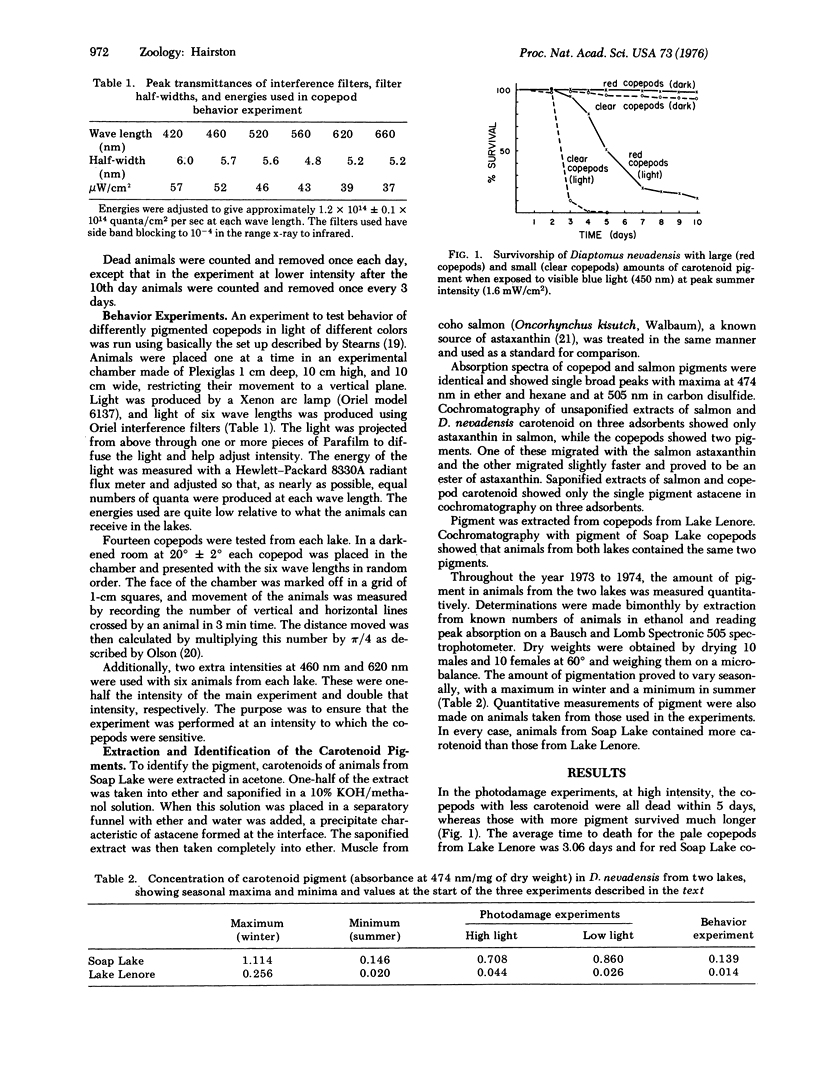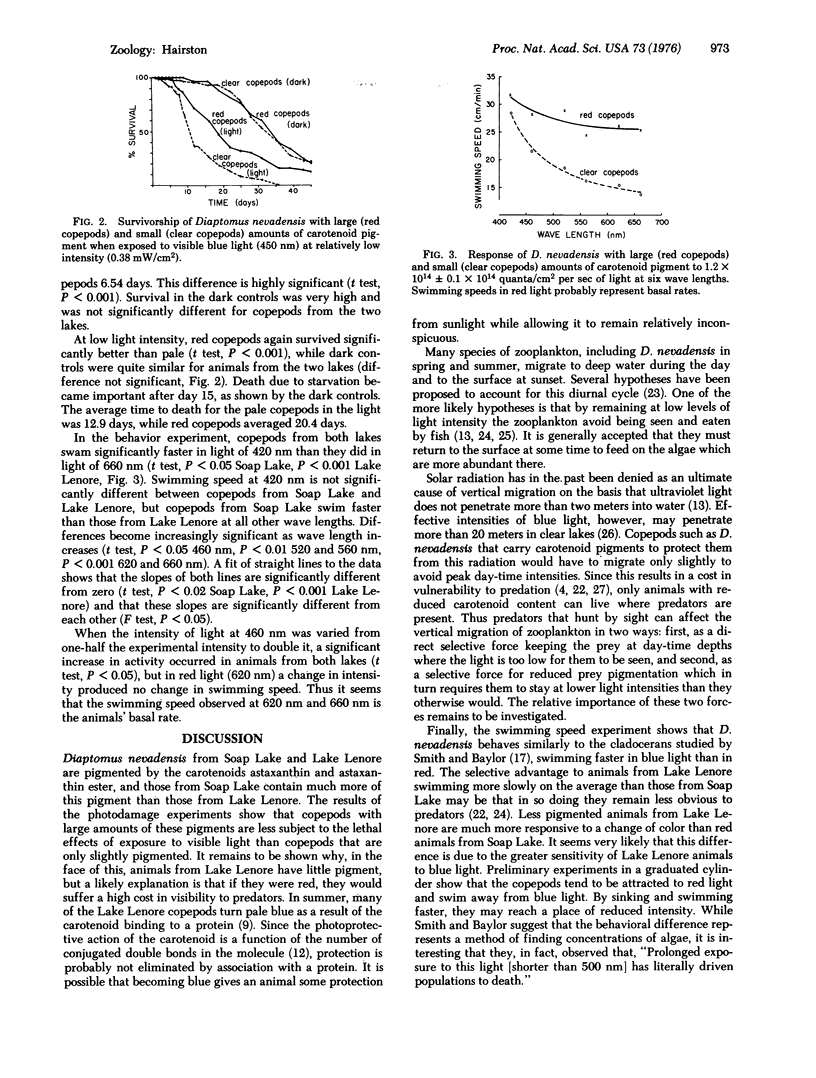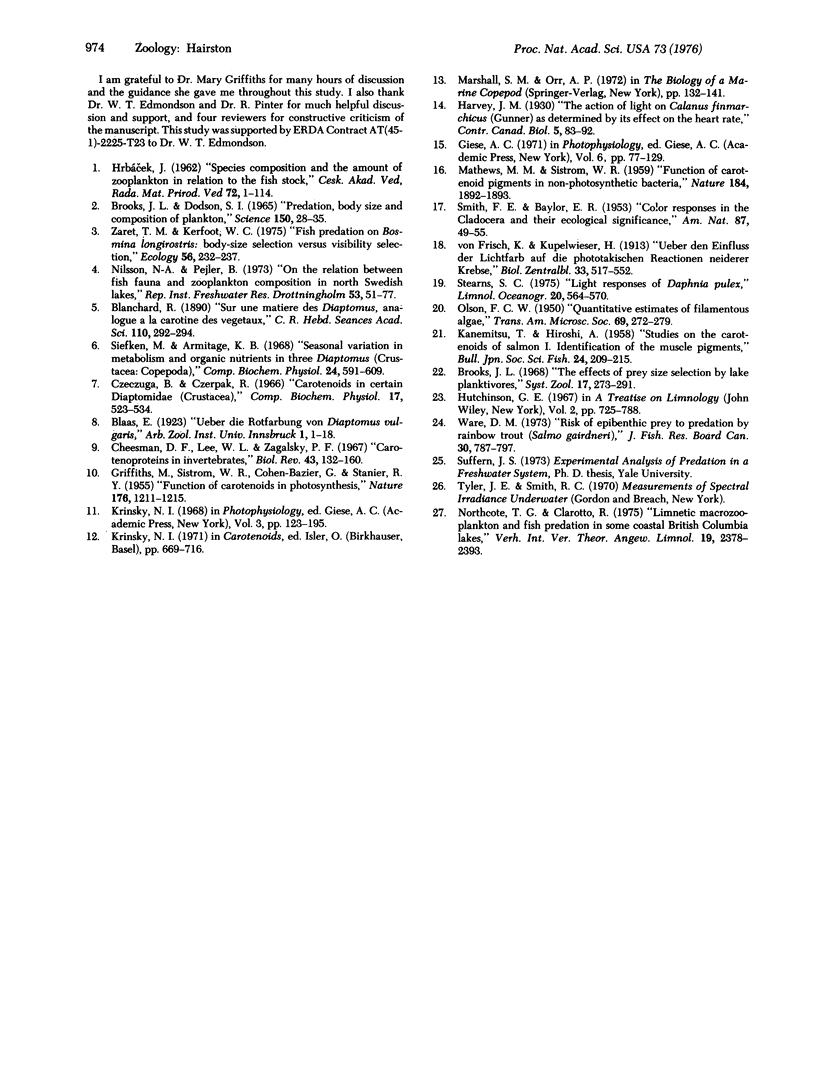Abstract
Individuals of the copepod Diaptomus nevadensis that contain high concentrations of carotenoids survive significantly better in natural intensities of visible light than less pigmented copepods. Vertical migration and behavior in light of different wave lengths are related to the degree of pigmentation.
Full text
PDF



Selected References
These references are in PubMed. This may not be the complete list of references from this article.
- Brooks J. L., Dodson S. I. Predation, Body Size, and Composition of Plankton. Science. 1965 Oct 1;150(3692):28–35. doi: 10.1126/science.150.3692.28. [DOI] [PubMed] [Google Scholar]
- Czeczuga B., Czerpak R. Carotenoids in certain Diaptomidae (Crustacea). Comp Biochem Physiol. 1966 Feb;17(2):523–534. doi: 10.1016/0010-406x(66)90584-6. [DOI] [PubMed] [Google Scholar]
- GRIFFITHS M., SISTROM W. R., COHENBAZIRE G., STANIER R. Y., CALVIN M. Function of carotenoids in photosynthesis. Nature. 1955 Dec 24;176(4495):1211–1215. doi: 10.1038/1761211a0. [DOI] [PubMed] [Google Scholar]
- MATHEWS M. M., SISTROM W. R. Function of carotenoid pigments in non-photosynthetic bacteria. Nature. 1959 Dec 12;184(Suppl 24):1892–1893. doi: 10.1038/1841892a0. [DOI] [PubMed] [Google Scholar]
- Siefken M., Armitage K. B. Seasonal variation in metabolism and organic nutrients in three Diaptomus (Crustacea: Copepoda). Comp Biochem Physiol. 1968 Feb;24(2):591–609. doi: 10.1016/0010-406x(68)91012-8. [DOI] [PubMed] [Google Scholar]


